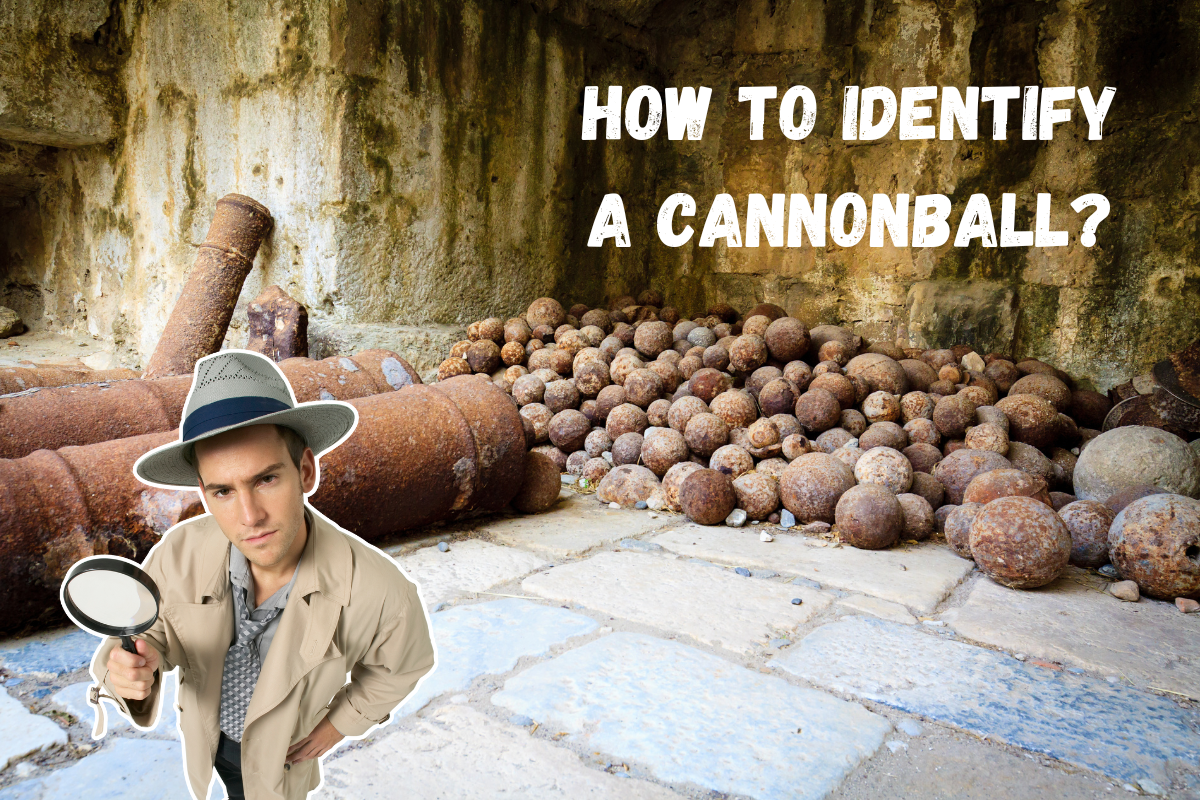Welcome to the wonderful world of metal detectors!
Thanks for coming.
I bet you’re here to learn a bit more about your brand-new metal detector. Or, you’re looking into metal detecting as your next outdoor adventure.
Either way, you’ve found the right place.
I’ll teach you how a metal detector locates hidden treasures, what kind of metal it can detect, and what each part of the detector does.
By the end of this article, you’ll be well on your way to digging up history one piece at a time, just like all the other Diggers, including me.
How Do Metal Detectors Work?
A metal detector uses electromagnetic induction to detect other magnetic fields created by metal objects in the area of the originating frequency signal.
Simply put, the coils in a metal detector emit a magnetic field when powered by electricity.
When a metal that identifies as a good conductor of electricity enters the magnetic field, it creates a disturbance in the field that the metal detector will interpret.
What exactly are these disturbances? They are known as Eddy currents.
Stay with me here. I’m getting a bit technical, but it’ll make sense in a minute.

Eddy currents flow in a circular path around a metal object, creating its own electromagnetic field.
The different components of the metal detector use this corresponding magnetic field to determine the presence and location of the metal objects.
I’m a more visual learner; maybe you are too. If so, this might help you understand the process a little better.

What Are the Main Components of a Metal Detector?
There are 5 main components to a standard metal detector. These components are the shaft, stabilizer, control box, search coil, and power cable.
Let’s take a look at each of these in more detail.

The Shaft
The shaft is the metal pole you hold in your hand via the handle when using the metal detector. It’s also referred to as the stem or just a rod.
The stem houses the search coil and is connected to the control box. The metal detector shaft usually comes in sizes from 14 to upwards of 48 inches.
It’s typically this long to make treasure hunting less painful for your body by giving the weight some even distribution for your frame.
Don’t let your height restrict the metal detector choices you have.
Luckily, this is the exact reason why reputable brands make adjustable stems.
The Stabilizer
The stabilizer is the attachment piece secured to the shaft that helps keep it stable while in use.
But a stabilizer is such a technical name for it. Let’s just call it what it is, an armrest.
It’s often made from carbon fiber, metal, or plastic.
The armrest, or stabilizer, is easily identified by the half-circle support placed under your arm as a controlled resting attachment.
The Control Box
The control box is the small (or sometimes large) control panel that sits at the top of the shaft.
It houses all the metal detector’s electronic components, which you use to adjust the settings on your device.
There are many different adjustable functions found on your panel. Depending on the make and model of your metal detector, the advanced features will vary.
But some standard functions include an on/off switch, a volume knob, and several different sensitivity and discrimination controls.
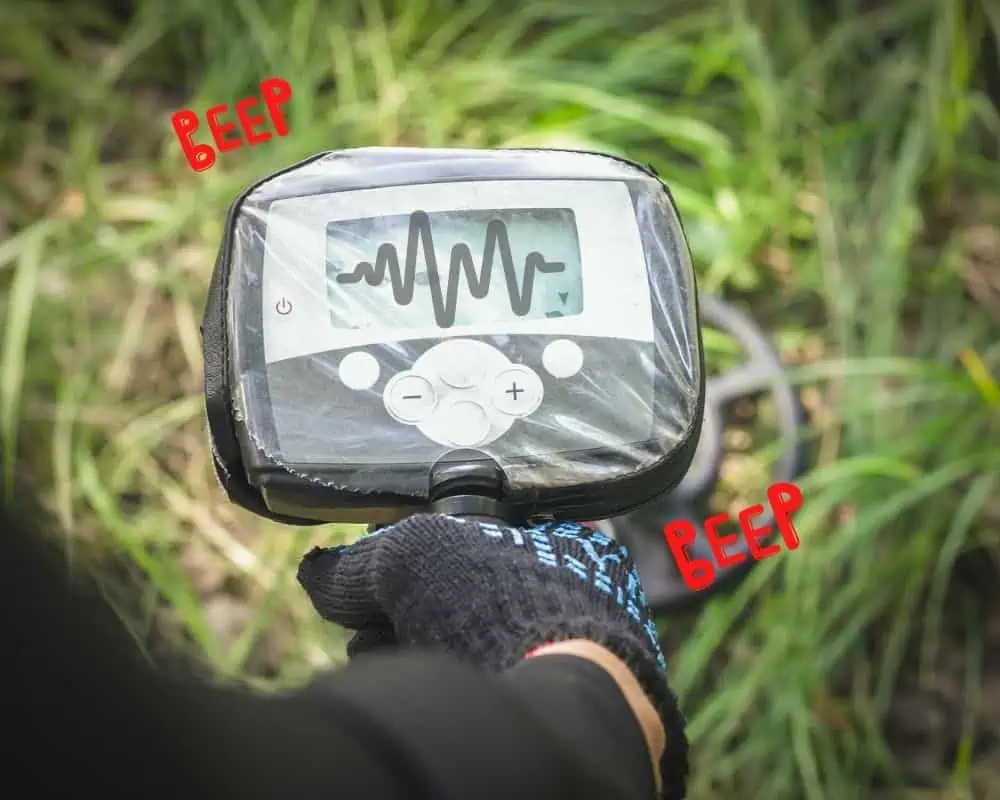
The Search Coil
The search coil is the metal disk at the end of the metal detector shaft. It’s also known as the transmitter coil or simply the coil.
The search coil emits a magnetic field in your target area. If metal is nearby, a separate magnetic field is received in response and identified by the search coil.
This identification signal is sent to the control box, where it is analyzed and interpreted.
Search coils come in different shapes and sizes. Sometimes a metal detector operates with two search coils simultaneously within one housing.
But the round or elliptical coils are the most common.
An important distinction is that your metal detector will better detect particular metal objects depending on your search coil.
For example, a coil designed for gold prospecting will not be as good at detecting nails as a coil intended for all-purpose use.
The good news is that you can usually buy interchangeable search coils for your metal detector. It’s something to consider if versatility is a top priority.
So keep that in mind when buying a new metal detector or upgrading your accessories.
The Power Cable
The power cable is the cord that connects the control box (where the power source is located) to the coil.
A heavy-duty black cord plugs into the back of the control box and wraps around the metal detector shaft.
This keeps any wires from getting in the way of your treasure hunting.
Just so you know, the power source is ordinarily battery-powered.
What Are the Types of Metal Detectors?
There are 3 types of metal detectors: VLF, PI, and MI (multi-frequency detectors).

Each different kind of technology has its pros and cons.
To pick the best metal detector for you, you need to evaluate what ground conditions you think you’ll search on and what metals you’re targeting.
So, let’s dig into what VLF, PI, and MI offer you.
VLF metal detectors use two coils located at the shaft’s end. While one of the coils creates a magnetic field, the other is set to receive any magnetic fields in response.
This receiving coil lets the detectorist know what metals are found within the range of the metal detecting frequency.
The advantage of using a VLF metal detector is that they’re very good at detecting small metal objects. The downside is that they are more susceptible to interference from natural minerals in the ground.

PI metal detectors use a single coil that acts as both a sender and receiver of frequencies. This single coil emits a shortened magnetic field by transmitting short blasts rather than a constant stream of frequency waves.
Within microseconds, the field collapses, and an electrical spike takes place. Depending on the quality of your metal detector, this happens at least 100 times a second or more.
When metal objects enter this pulsating field, they alter the voltage spike, letting the control box know a target is present.
The advantage of PI metal detectors is that they are outstanding when hunting for gold and other deep targets.
Thanks to the short bursts from the coil, your metal detector can circumvent the interference from highly mineralized areas to reach deeper with more accuracy.
This includes searching for metal underwater.

The downside is that they aren’t ideal for beginner detectorists. You’d probably want to start with something more friendly to varying environments. This means you need more control over discrimination.
Without that control, be prepared to find more junk than treasure.
Pulse induction metal detectors have a low degree of discrimination and are often considered all-metal devices.
MI (Multi-Frequency) metal detectors are a fantastic choice if you have the extra money to spend. These devices can operate at multiple frequencies, which helps to eliminate interference from natural minerals in the ground.
Eliminating interference usually means getting more accurate readings from your metal detector and making some finds others assumed were garbage.
Just like Pulse Induction models, MI metal detectors are excellent at detecting small metal objects. As I’ve said, the downside is that they can be more expensive than other metal detectors.

If the price is a significant factor, you could just try and build your own.
But, if it’s taking you out of your comfort zone, you should read my review for the best metal detectors for under $100.
Just because they’re less money doesn’t mean you have to sacrifice quality.
What Metals Will a Metal Detector Find?
A metal detector will find two classifications of metal: ferrous and non-ferrous.

Ferrous metals are those that contain iron and are attracted to magnets. These include items such as nails, metal fragments, and even some coins.
Non-ferrous metals are not attracted to magnets. They’re also considered some of the more valuable metals like gold, silver, copper, and aluminum.
Ferrous items makeup about 90% of metal objects found worldwide and are used more often because of their durability. Whereas non-ferrous metals are more pliable, like aluminum foil, and have many uses today.
It’s surprising, considering these metals comprise the remaining 10% of known metals.
While they’re less prevalent in society, don’t overlook these materials. I probably don’t have to tell you that detecting non-ferrous metals can be very lucrative.
On top of being less available, their market value makes them more sought after when melted down and sold.
Some other examples:
| Ferrous Metals | Non-Ferrous Metals |
|---|---|
| Nails | Gold |
| Screws | Silver |
| Bolts | Copper |
| Tin Cans | Aluminum |
| Old Metal Jewelry | Titanium |
| Steel | Bronze |
| Cast Iron | Brass |
If you’re wondering what metal your device can’t detect, read my article on what limitations you’ll bump up against.
How Deep Can a Metal Detector Detect?
So, you’ve learned about the different types of technology a metal detector offers. You’re familiar with the various parts and how they work.
And now, you know the difference between some of the metals you might be after.
But let’s get down to the brass tax. Finding these little treasures sound fantastic. But how do you know your detector can find them?
It depends.
The depth at which a metal detector can detect metal objects relies on the type of metal detector used and the environment in which it is used.
An average metal detector can detect a metal’s depth anywhere from 4 to 12 inches.
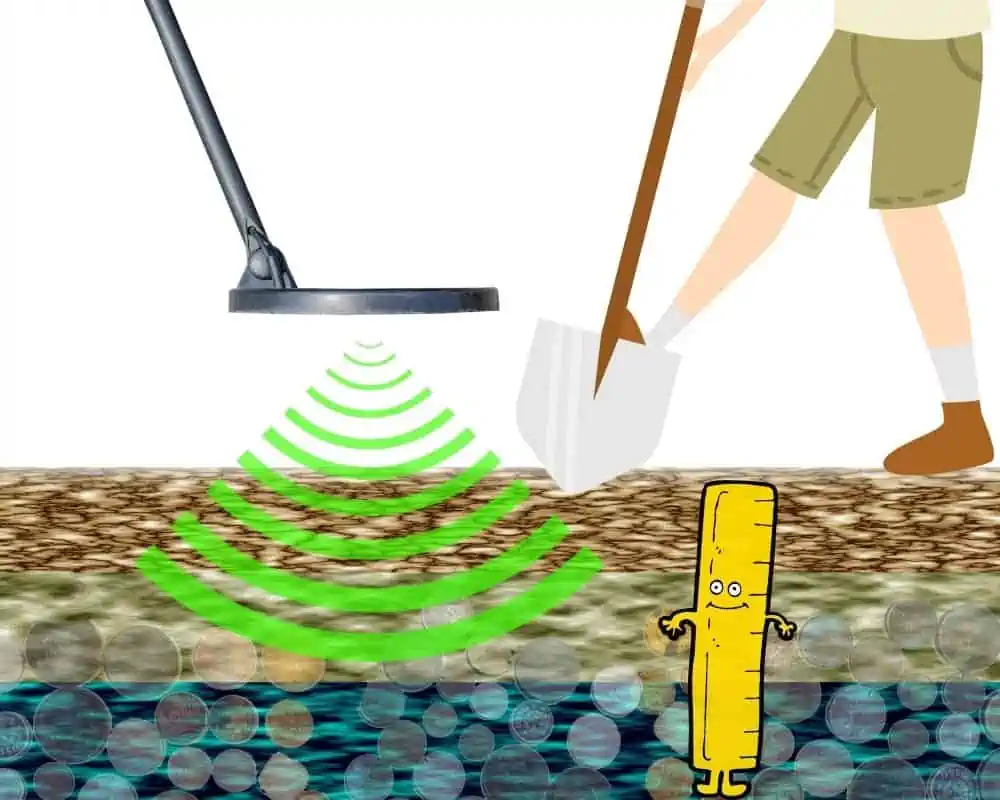
However, you can buy a metal detector designed to detect metal objects at depths of up to 60 feet. But these are not what I would categorize as everyday use metal detectors.
You’ll want to consider a VLF or MI metal detector for your purposes. It’s more likely to detect metal objects at shallower depths than a PI metal detector.
But far enough to find old iron relics, misplaced pirate treasure, or even your own property stakes.
If you purchase a Pulse Induction metal detector, you can detect as deep as two feet under the right conditions.
So if you have your sights set on gold or underwater treasures, Pulse Induction technology fits your needs more.
Additionally, the environment in which a metal detector is used will affect its ability to detect metal objects. You’ll have trouble getting a clear reading at any depth if you use a metal detector in an area with excessive metal interference.
Unless you’re using a PI metal detector or a device with advanced features to counteract the false signals.

Just one more thought on depth. Most metal detectors aren’t meant for mining-like depths. If that’s your goal, you need to look into something more specialized.
A device that utilizes ground-penetrating radar would take you to an entirely different level.
How To Use a Metal Detector
Now that you know all about the science of metal detecting let’s get into the operational technique of finding preferred targets.
You already know that when a metal detector is turned on, it emits an electronic pulse. And this pulse travels out in all directions.
However, if you’re just holding the metal detector in place, it won’t be able to detect the magnetic field generated from the buried metal.
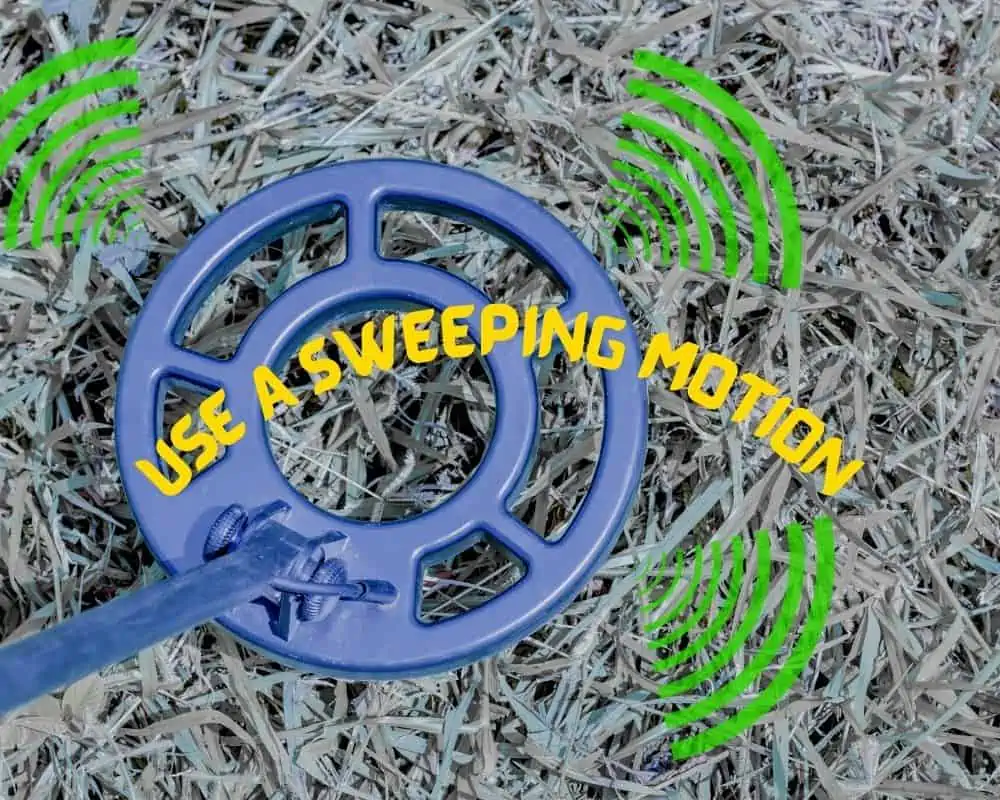
For the metal detector to detect the new magnetic field, you need to move the metal detector over the metal in a sweeping motion.
This sweeping gesture allows the metal detector’s coil to interact with the eddy current encircling the metal object.
Then the interaction triggers your metal detector to collect the data from the returning signal and output the results on your control box display.
But let’s back up for a minute. We just jumped over a crucial step.
One thing you should do before you even start searching for lost bits of history is to ground your metal detector.
What is grounding, you ask?

Grounding or ground balancing is the act of calibrating your metal detector to the soil conditions under you.
This essential technique will set the machine’s baseline to adequately read the metals and minerals in the target area.
If done improperly, you’ll get a lot of false signals from the ground, and you might miss the good stuff. Plus, you’ll be wasting hours digging for something that isn’t there.
You must find an ideal spot to properly ground your metal detector. This starting point should be flat, solid, and free of metal objects.
Once you’ve found your place, take your metal detector and hold it, so the search coil faces down. Now, be sure to adjust your threshold so that your device is barely making any noise at all.
Look through the owner’s manual of your machine for exact instructions.
Next, you’ll want to raise your coil about a foot into the air, then lower it, stopping just short of brushing the ground.

You should be doing this in a seamless movement, without pausing.
Up and down, up and down, up and down.
If your detector’s threshold never changes, meaning no sound variations occur, you are optimally balanced to the ground.
However, if the sound does make a different noise when raising or lowering the coil, you need to make some adjustments.
This can be done on the control box by configuring the ground balance control.
Most newer metal detectors actually have an automatic ground balance option built-in.
You’re all set to get started if you have one of these!
What Uses Do Metal Detectors Have?
You’ve come a long way and learned many significant points that metal detectorists deal with daily.
I’m hoping you’re just as excited to get out there as I was when I started. There are so many uses for metal detecting. If you’re like me, we find comfort and excitement in this hobby’s possibilities.
Whether it’s coin shooting, prospecting, beachcombing, or just digging dirt for some exceptional piece of history, there’s never a shortage of new experiences you can take advantage of.
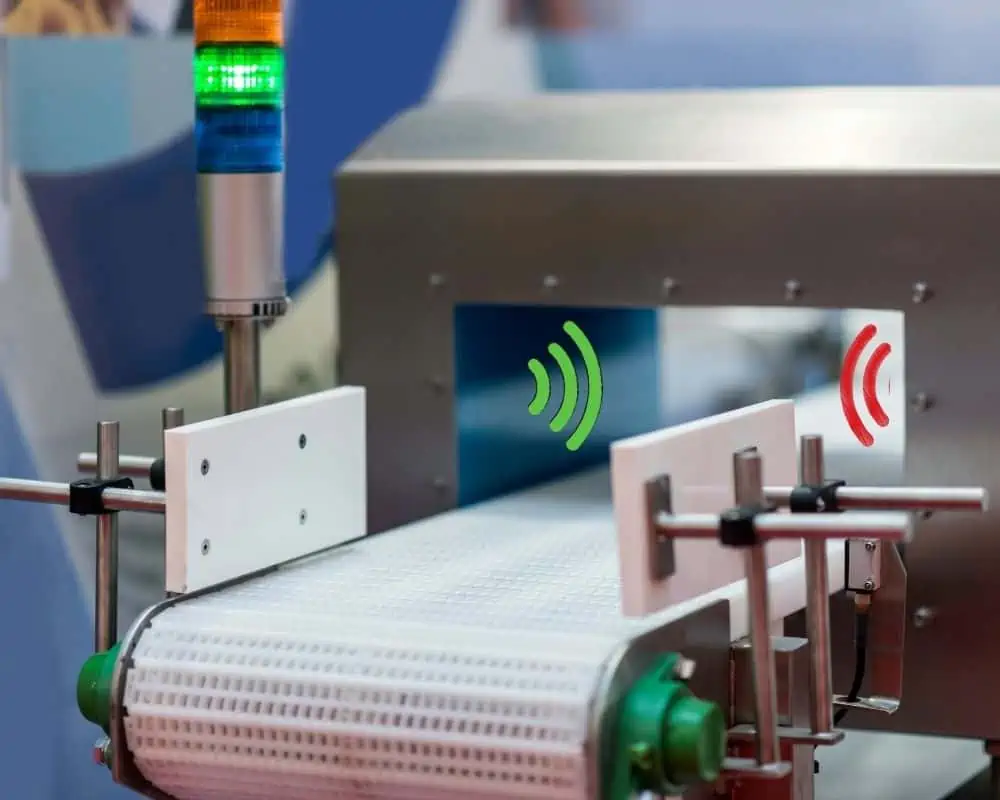
But enthusiastic hobbyists are just one side of the coin.
The security industry uses all kinds of advanced technology to detect harmful threats. Metal detectors play a massive role in keeping us safe in airports, hospitals, and prisons, to name a few.
I’m referring to more dangerous items like a knife or firearm instead of a less harmful vape pen or iPhone.
But metal detectors don’t just stop at security checkpoints.
Museums worldwide use metal detectors to ensure they are getting the right artifacts back on exhibit. Art galleries have started using metal detectors to help prevent the theft of paintings and other priceless works of art.
Numerous search and rescue teams use metal detectors to help locate people who have gone missing. If someone has fallen into a ditch or crevice, metal detectors can help find them quickly to get the medical attention they need.

Security is an obvious need. But there are so many more sectors that have found a use for electromagnetic fields.
For instance, the food industry needs to scan for metal contaminants that may have gotten mixed into packaged food.
Another booming business is the mining industry. They use metal detectors to help find minerals and metals beneath the surface.
So, as you can see, metal detectors have a wide range of services to offer.
In Conclusion
The world of detecting is fun and adventurous, open to just about anyone willing to put in the work. There is always something new to learn, whether a beginner or a pro.
I hope I’ve given you enough information about metal detectors and how they work that now you’re ready to dive into the unknown of what lies beneath your feet.
If so, keep exploring my site for more metal detecting tips, tricks, and tutorials.
And as always, keep digging!



